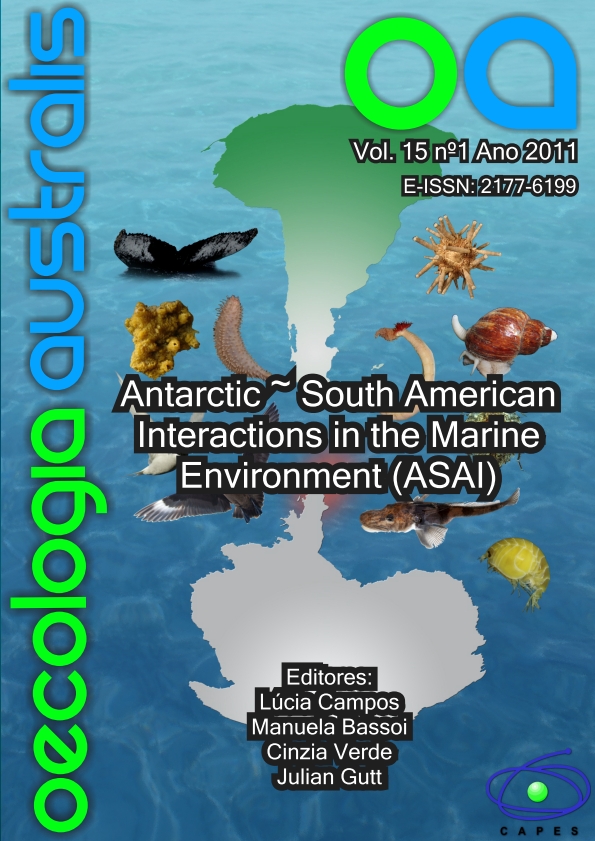PRESENCE OF THE LEOPARD SEAL, HYDRURGA LEPTONYX (DE BLAINVILLE, 1820), ON THE COAST OF CHILE: AN EXAMPLE OF THE ANTARCTICA - SOUTH AMERICA CONNECTION IN THE MARINE ENVIRONMENT
Keywords:
Leopard seal, Chile, South America, Southern Ocean.Abstract
Sightings of 114 leopard seals, Hydrurga leptonyx, have been recorded along the Chilean coasts from 1944 to 2010. Mostly immature seals occurred in northern and central Chile (18°30´S-39°59´S), especially in winter, while immature and adult individuals of both sexes and in good condition were commonly sighted year-round in glacial areas of southern Chile, especially Tierra del Fuego (south of 53°43´S), suggesting that this Antarctic species can be consider as a regular member of the marine fauna of Chile, with occasionally hauling out on the northern coastline not as vagrants, but as seasonal transients. Keeping in mind data limitation, we discuss some ways of northern dispersion and the subsequent residence of some animals in the Southern region of South America. These include, respectively: the close proximity of the Fueguian channels with the Antarctic Peninsula facilitated by the northward extension of the Antarctic pack ice during winter and/or through the influence of the Malvinas current; and the suitable habitat of the Fuegian channels, with similar characteristics to the Antarctic environment and locally abundant food resources.


